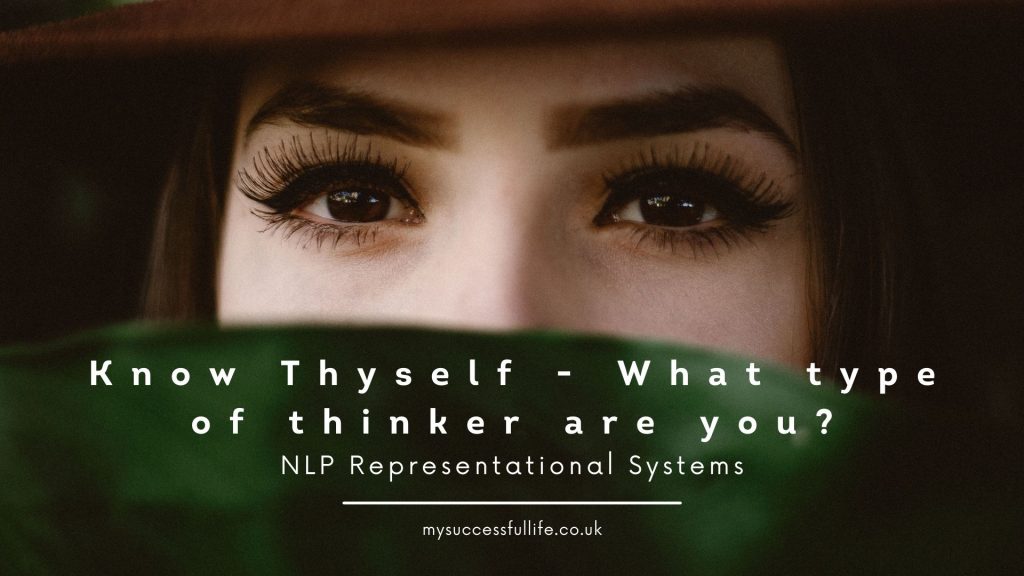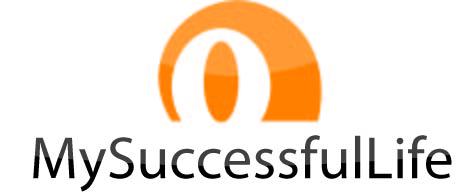Know Thyself – What type of thinker are you? NLP Representational Systems

This article is primarily focused at healthcare professionals, particularly dentists although the content is relevant to anyone in business.
Did you know there are four primary ways that we make sense of the world around us:
- Visually
- Kinaestheticly
- Auditory
- Auditory digital (logical structured)
When you understand which one you are primarily it makes it far easier to recognise why you think in certain ways, it also will help you communicate with people which represent the world around them differently to you, but when you think the plans patients or dealing with other team members.
Visual
People that represent the world around them visually think primarily in pictures. Most of us do this to a certain degree although some people do it far more than others. Visual people will often be artists, designers, photographers or anything to do with visuals.
When these people think in pictures they will literally create a picture in their mind’s eye… Even a visual speller will visually see the letters of the word in their mind (by the way, this is the strategy to use if you are not a great speller, visualise the letters in the word rather than try to use simple memory).
A visual person will often say things like:
- “do you see what I mean?”
- “do you get the picture?”
The words they use literally explain how they represent their world.
Top Tip: if you are presenting a treatment plan to a visual person then use plenty of photographs and diagrams to explain what you mean
Kinaesthetic
People that represent the world around them in a kinaesthetic way are more connected to feeling. This is both emotional feeling and physical feeling. Kinaesthetic people will often have touch related jobs e.g. massage, reflexology or even something like a potter. They may also be counsellors and connect with feelings and emotions in their job.
A kinaesthetic person will often say things like:
- “does that feel OK?”
- “What do you feel about that?”
Top tip: If you are presenting a treatment plan to a kinaesthetic person have study models that they can hold and feel, have physical models of implants and crowns so they can touch and hold them.
Auditory
One of the least common representational systems. Auditory people will be very focused on the way the world around them sounds. They may be musicians or work in jobs relating to sound. An auditory person will also a very distracted by sounds around them and will often want to work in a quiet environment. If you’re talking to an auditory person they may find it difficult to hold a conversation with you if other people are also talking in the background.
An auditory person might say things like:
- “How does that sound?”
- “Do you hear what I’m saying?”
Top Tip: If you are presenting a treatment plan to an auditory person it will be absolutely fine to explain by voice alone what the treatment plan is. You could also record your explanation and send it to them as an auditory file.
Auditory digital
This relates to internal dialogue and logical thinking. Auditory digital people will often be engineers, scientists or people which think in very clear, logical straight lines. An auditory digital person needs order, flowcharts and processes.
I’ve run many courses looking at these different types of representational system and by far the greatest percentage of dentists are auditory digital. Auditory digital people like to think, plan and organise.
An auditory digital person might say:
- “there is logic in what I’m saying”
- “does that make sense?”
Top Tip: if you are presenting a treatment plan to an auditory digital person use statistics to back up your argument for example, success rates, number of treatments completed etc. Present your treatment plan logically using reason, systems and analysis to present it. And above all, if you are a dentist the chances are this will be your primary representational system, so be flexible in the way you communicate.
So how do you represent the world around you?
Which of the representational systems looks, sounds, feels or logically is more like you? (See what I did there!).
If you do some digging around online you should be able to find a representational system preference test (alternatively send me an e-mail and I can provide one for you), this will give you an idea of what your own representational system is.
And the biggest tip I can give… Just because something seems right to you, does not necessarily mean it is right or make sense to someone else… Remember, most dentists are logical auditory digital thinkers, and most people in the general population are visual. Remember to present your treatment plans in a way that makes sense to the person you’re communicating with.


